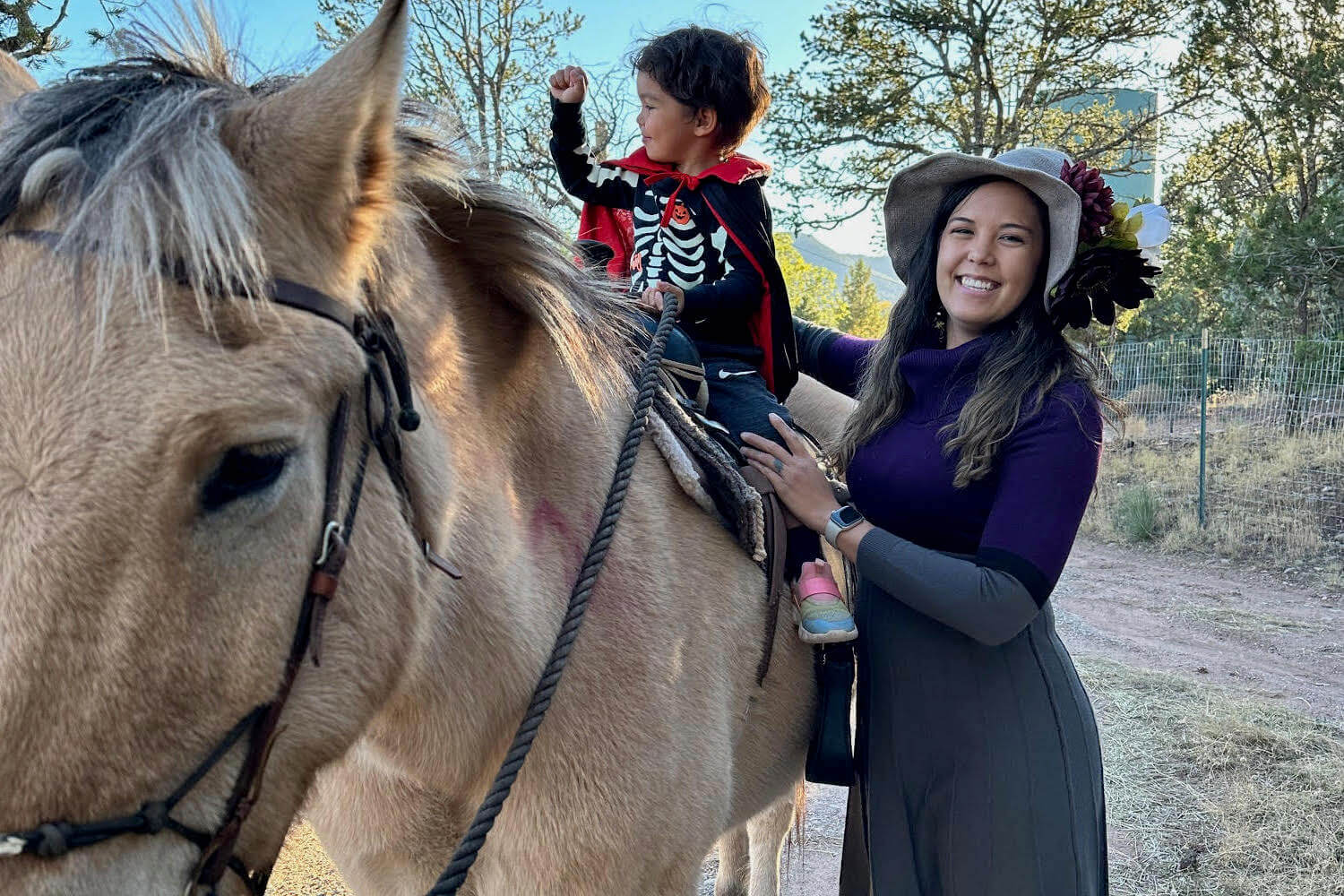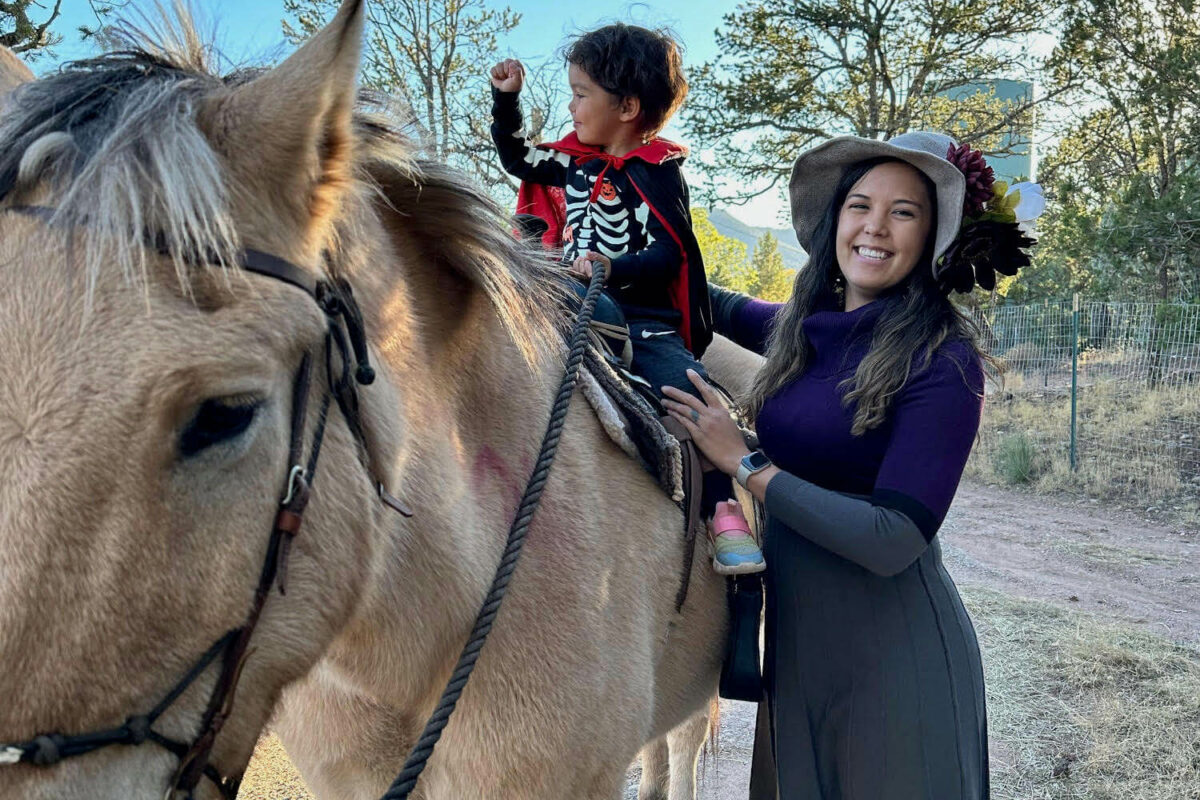
Updated on February 5, 2025
More Families Qualify for FREE Child Care in New Mexico Than Ever Before! Do You?
Tina is a mom who also loves her work. By day, she is a teacher at New Mexico Connections Academy. And on nights and weekends? Tina is a fire circus performer, which is as cool as it sounds. Picture someone doing fun-to-watch things with fire (dancing with it, swallowing it), and you more or less have the idea.
Tina has done fire performance for almost a decade, and said she didn’t want to give up the work she loves when she became a mom three years ago. And as it turns out, she didn’t have to. Tina has been able to keep performing and teaching, in part because her family receives Child Care Assistance. Child Care Assistance makes child care FREE in New Mexico for families earning up to 400% of the federal poverty line, which translates to an income limit of about $106,600 for a family of three (see more details here). The income limit has been greatly increased since 2021, so many families who didn’t qualify in the past can qualify now.
Child Care Assistance fully covers the cost of weekday care at Santa Fe Montessori for Tina’s child, Torrin. Tina loves the small class sizes, the educators, and the Montessori philosophy. And Torrin, who is 3 now, has been happy there for the past two years that the family has been receiving Child Care Assistance.
Torrin’s weekday hours at Santa Fe Montessori don’t directly cover Tina’s time as a fire performer, but she said the assistance makes it possible indirectly, and also supports her decision to remain in the workforce as a teacher. By reducing the family’s overall child care costs, the Child Care Assistance tips the financial scales in favor of Tina continuing to pursue the careers she loves.
“It makes a lot more things possible,” Tina said. “I would not have started my entertainment business back up or started performing again if I didn’t have that, because the numbers wouldn’t have made sense.” She also might have had to leave teaching.
When she says “the numbers,” Tina means the financial calculation that many families consider about whether paid work is worthwhile after accounting for the high cost of child care. Before they received Child Care Assistance, she said she and her former partner were looking at options, including Tina leaving the workforce.
“This is the point at which many families decide whether one person works. And we crunched those numbers, too,” Tina said. “It was coming down to the point where the person who makes the most money probably needs to keep working and the other person doesn’t, if the numbers don’t make sense.”
That’s hard for all families, Tina said, and was a particularly painful prospect for her because she loves her careers and she loves to work. It was also a painful prospect for the state of New Mexico, because she and her former partner work in jobs the community sorely needs.
“For us in particular, he’s a mental health therapist, and I’m a highly qualified teacher in New Mexico,” Tina said. “So, to have us taken offline in the workforce is like, wow, we are in very high-need, high-demand jobs.”
Thanks in part to the Child Care Assistance, they are both still working and Torrin is still receiving high-quality care.


